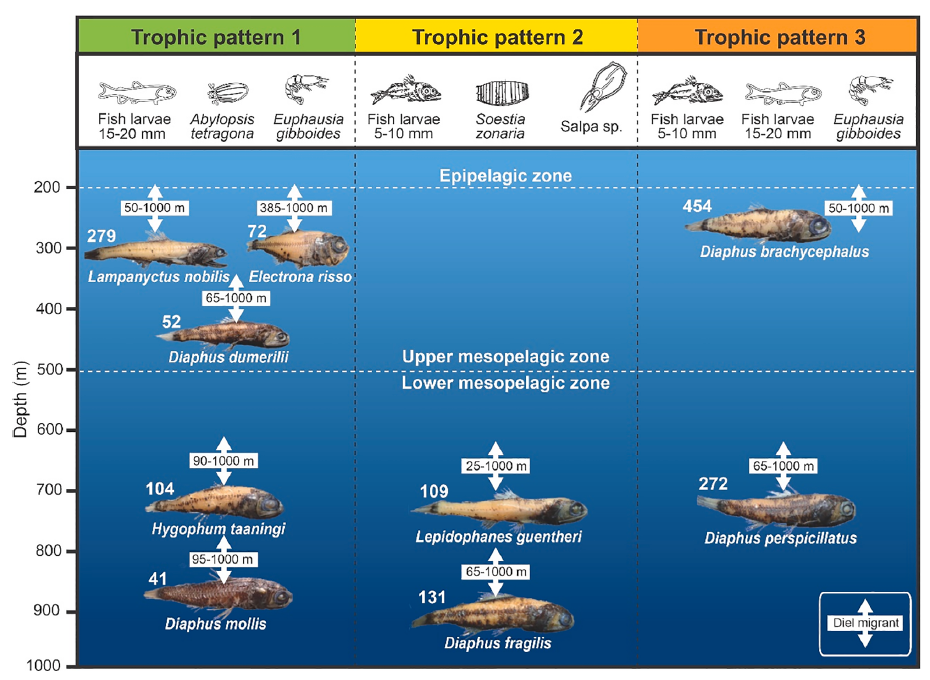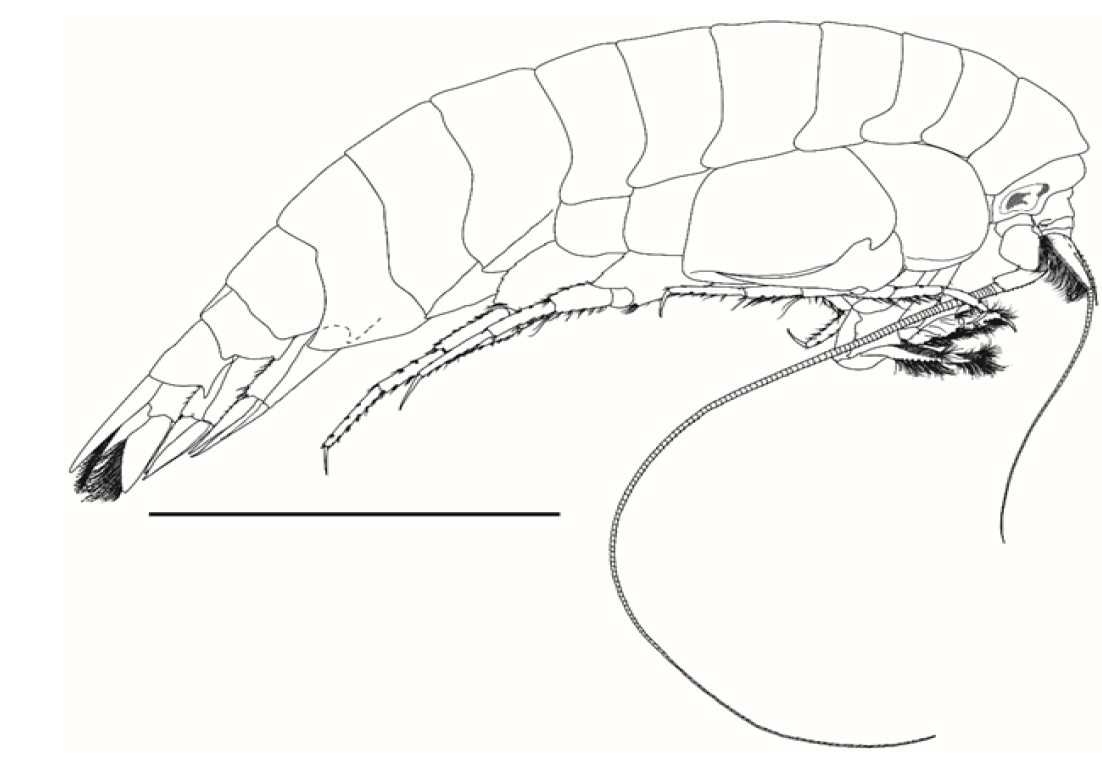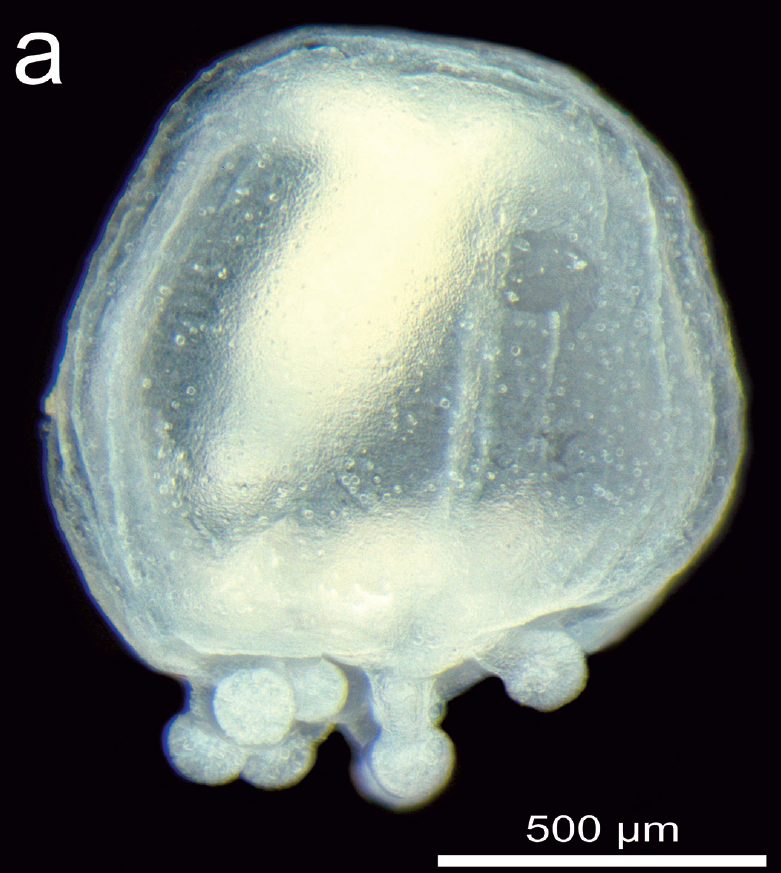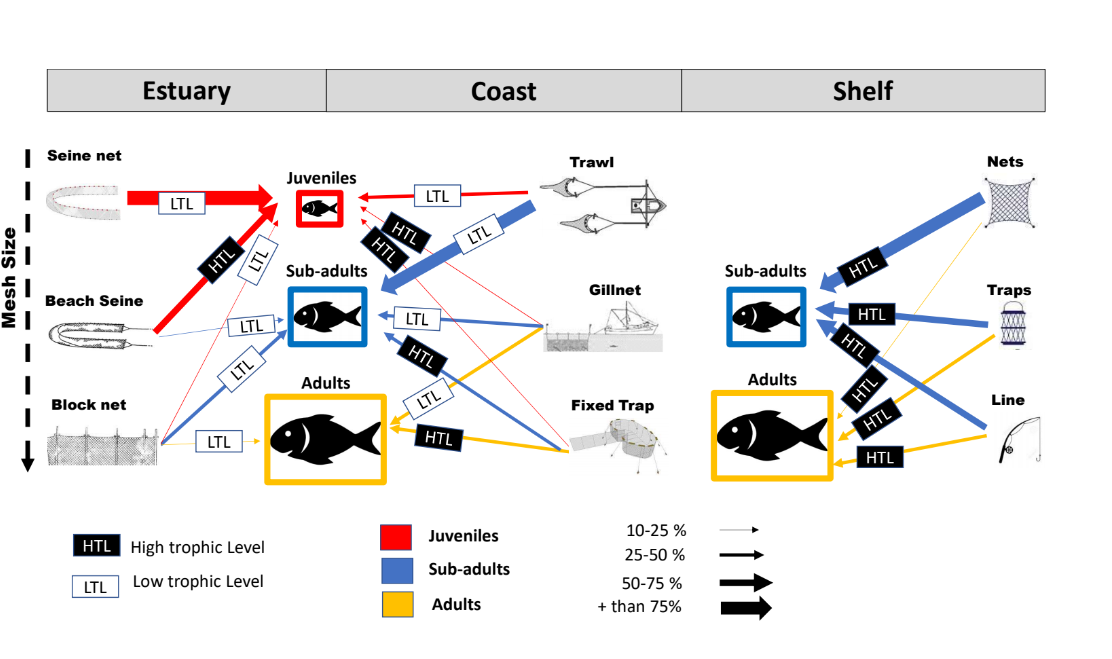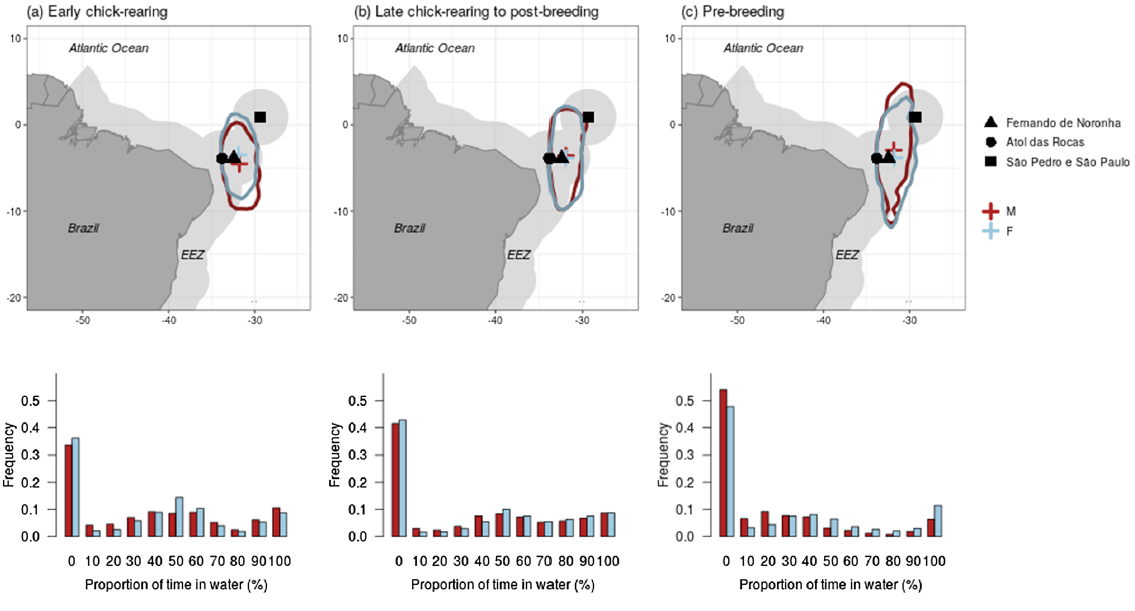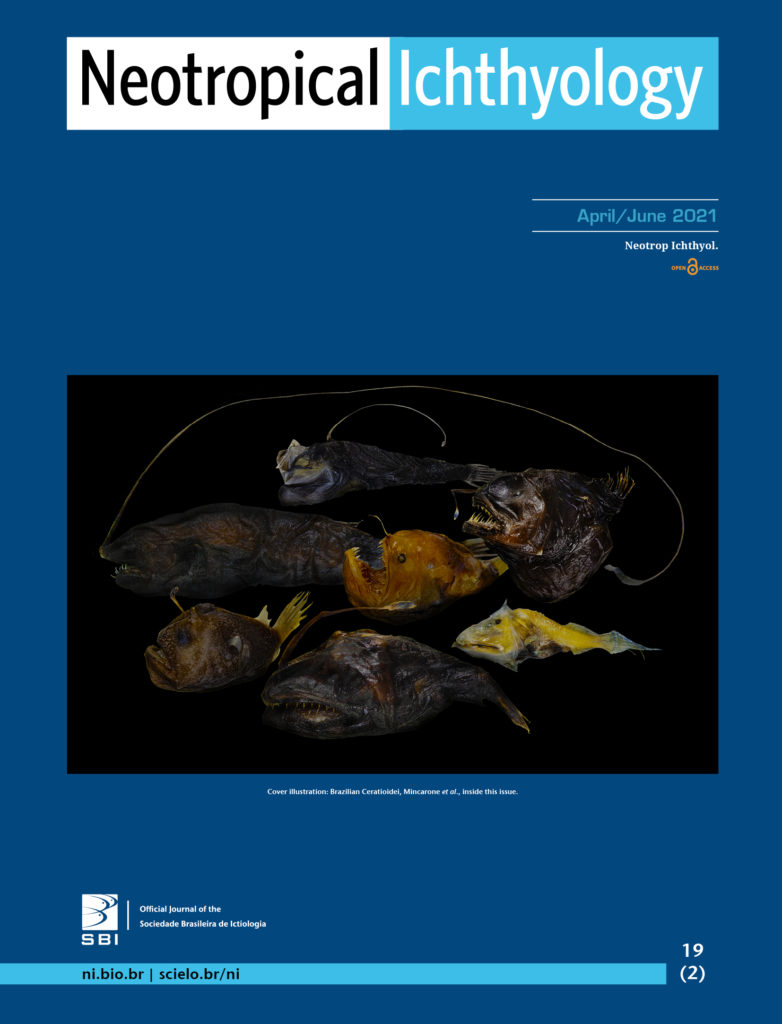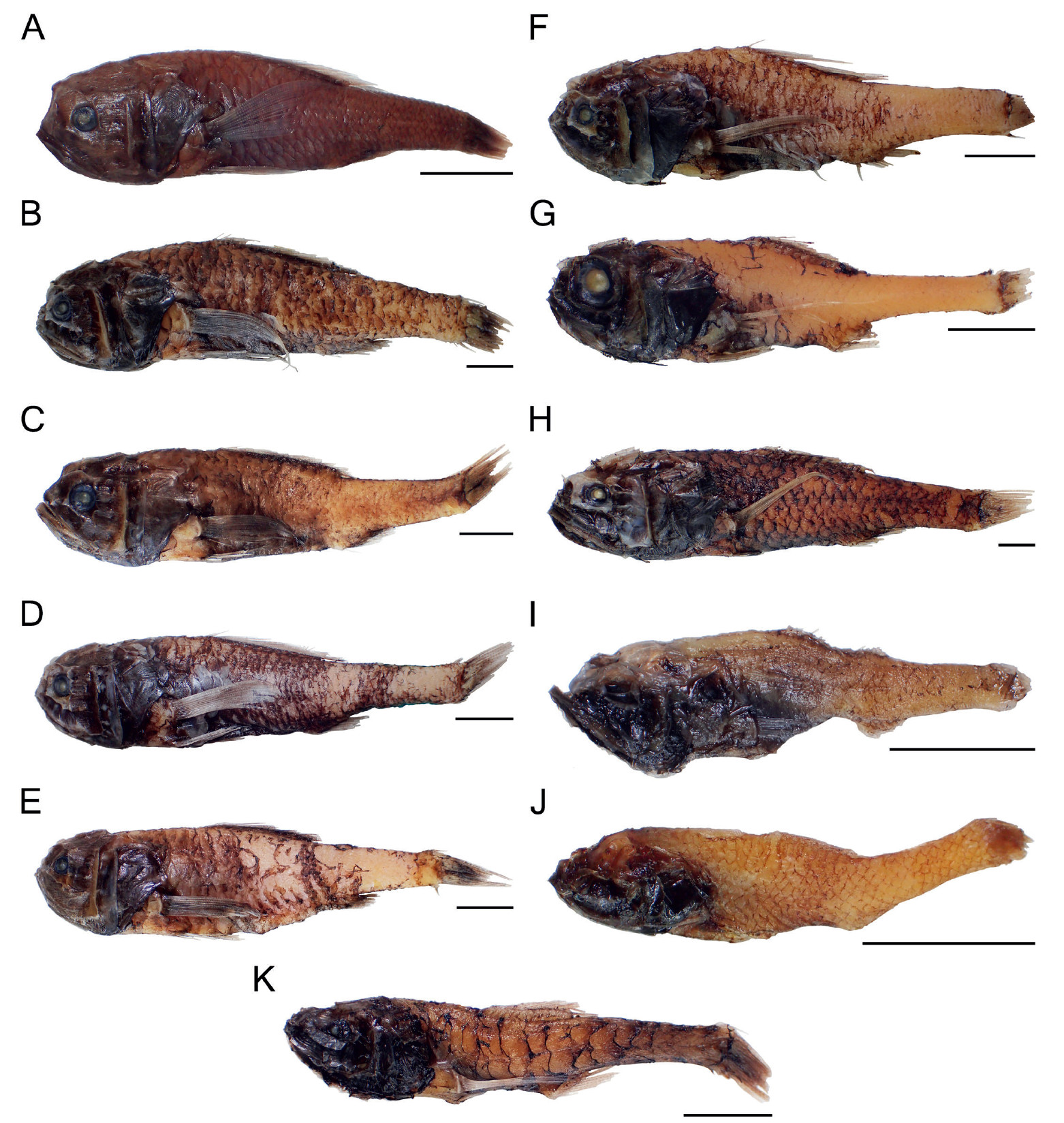Lanternfishes (Myctophidae) are among the most abundant, widespread, and diverse fish groups in the world ocean. They account for a significant part of oceanic fish
A new species of the genus Cyphocaris Boeck, 1871, is described. The material examined was collected during the “Acoustics along the Brazilian Coast” (Abraços 1)
Specimens of the hydromedusa Cnidocodon leopoldi Bouillon, 1978 were collected in waters off the northeast Brazilian coast between 7.4°S, 34.3°W and 8.7°S, 34.8°W. The genus
The objective of this study was to analyse the feeding habits and trophic interactions between four oceanic predatory fish around the Fernando de Noronha Archipelago
Specimens of Teissierapolypofera Xu, Huang & Chen, 1991 were found in waters off the northeast Brazilian coast between 8.858°S, 34.809°W and 9.005°S, 34.805°W and 56
Tropical small-scale fisheries (SSFs) are characterised by their multidimensionality (fleets, gears, habitats, and species). As many targeted species move between habitats throughout their life cycle,
Sea surface salinity (SSS) is a key variable for ocean–atmosphere interactions and the water cycle. Due to its climatic importance, increasing efforts have been made
Considerable progress in our understanding of long-distance migration has been achieved thanks to the use of small geolocator devices (GLS). The tracking of resident or
The deep-sea anglerfishes of the suborder Ceratioidei (Lophiiformes) are represented by about 170 valid species with some of the most extraordinary morphological and reproductive adaptations
Despite the increasing number of studies on the systematics of the Stephanoberycoidei (bigscales, pricklefishes, gibberfishes, hispidoberycids, and whalefishes) globally, knowledge about the diversity and distribution



